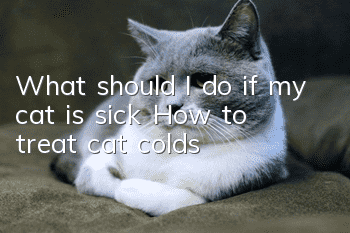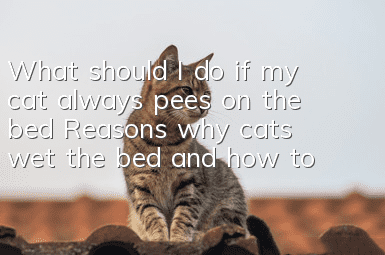What should I do if my cat is sick? How to treat cat colds

Cats sometimes get sick, and the most common disease is colds. Although cats have furry fur, they are also prone to colds if they are not kept warm, especially in the cold winter. What are the symptoms of a cat cold? What should I do if a cat has a cold? How to treat a cat cold? Let’s learn about it below.
Flu
Influenza is a viral disease that is usually spread by contact between cats. Antibiotics have no effect on viruses, so the usual treatment method is to reduce the cat’s clinical symptoms as much as possible and improve the cat’s own resistance through nutritionally balanced food to protect the cat’s life until the cat recovers naturally. But there is a way to prevent it - getting vaccinated against the flu.
The symptoms of cats suffering from this disease are severe colds, and there may also be ulcers on the surface of the eyes or inside the mouth. Cats rely on their sense of smell to arouse their appetite. Influenza can cause a loss of smell, resulting in a reduction in the cat’s food intake. Some cats never recover and become chronic flu sufferers or "snuffies." Kittens are often the worst victims and will die without careful care. To help protect against this disease, kittens need to be vaccinated, and adult cats need an annual booster shot.
Recognize symptoms
1. The sick cat is depressed, crouching and moving little, trembling all over,
2. The body temperature rises to 40 degrees, the wind causes fever, and clear mucus flows,
3. Decreased appetite, flushed conjunctiva, tears from embarrassment, sometimes cold and sometimes hot, accelerated breathing and heartbeat, a small amount of eye secretions, and difficulty breathing.
Causes
1. The cat’s physical fitness is poor, its resistance is weak, and the cattery’s cold-proof performance is poor.
2. When the temperature in nature drops suddenly and the temperature difference is too large, the resistance of the respiratory mucosa is often reduced. The cat's body is stimulated by the cold and cannot adapt to the changes for a while and develops a cold.
3. It is more common especially in early spring or late autumn when the temperature is changeable. Or it can also happen when a cat sweats during exercise and then is attacked by air conditioning.
Prevention and treatment methods
The principle of treatment for this disease is to induce wind and dispel cold, relieve fever and soothe blood. Prevent secondary infection. There are a wide range of medicines for treating colds. For example, Bupleurum, 2 ml/animal/time, intramuscular injection twice a day; 30% metamizole, 0.3-0.6 g/time. Ganmaoqing, Quick-acting Ganfeng Capsules, etc. are also available.
Notes
Always pay attention to improving the conditions of the cat’s living environment. Although spring has arrived, it is still warm and cold, so the warmth preservation measures are still in place, especially to prevent the invasion of drafts. When the temperature is relatively low at night, it is best not to let the cat go out. Before going to bed, check to see if the cat has returned to the room. Do not close the cat outside the door and sleep in the open. Cold protection measures must be taken for kittens. The kitten’s nest should be kept dry and warm and placed in a warm place at home.
- What is the triple vaccine for cats?
- What's going on with the cat's stomach twitching?
- What foods should Birman cats avoid?
- How long does it take for cat food to expire in a bowl?
- Can feline rhinitis be transmitted to healthy cats?
- What are the symptoms of a kitten being poisoned?
- How long does it take for a cat to have brown discharge?
- How long does a cat live and how to calculate its age
- How to train a Himalayan cat not to eat dead mice
- Causes of depression in cats



